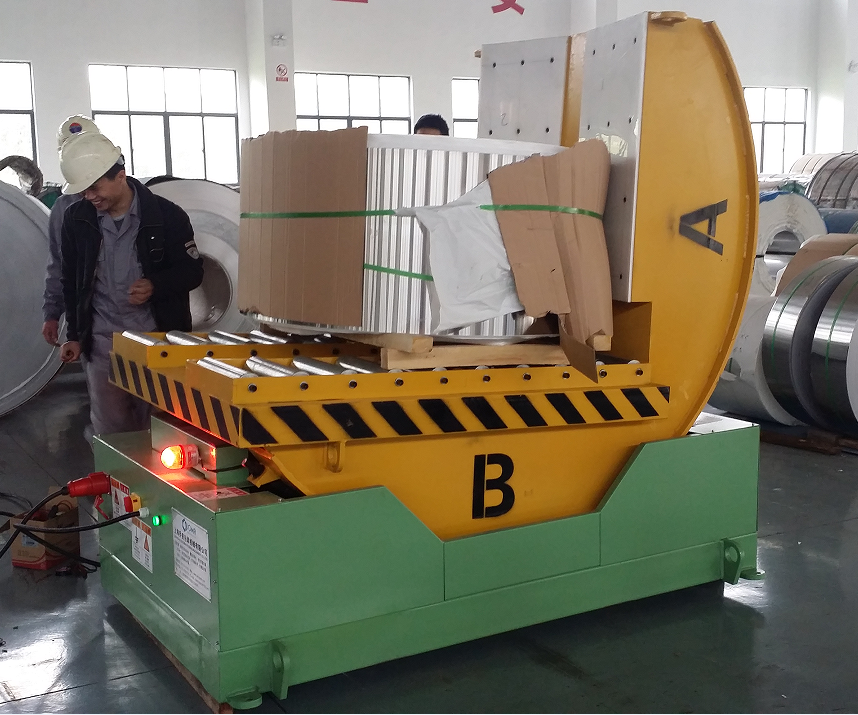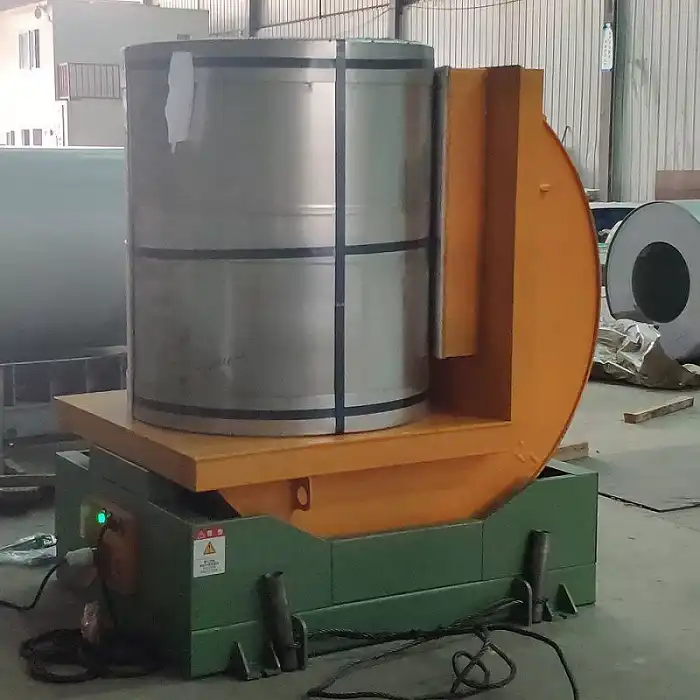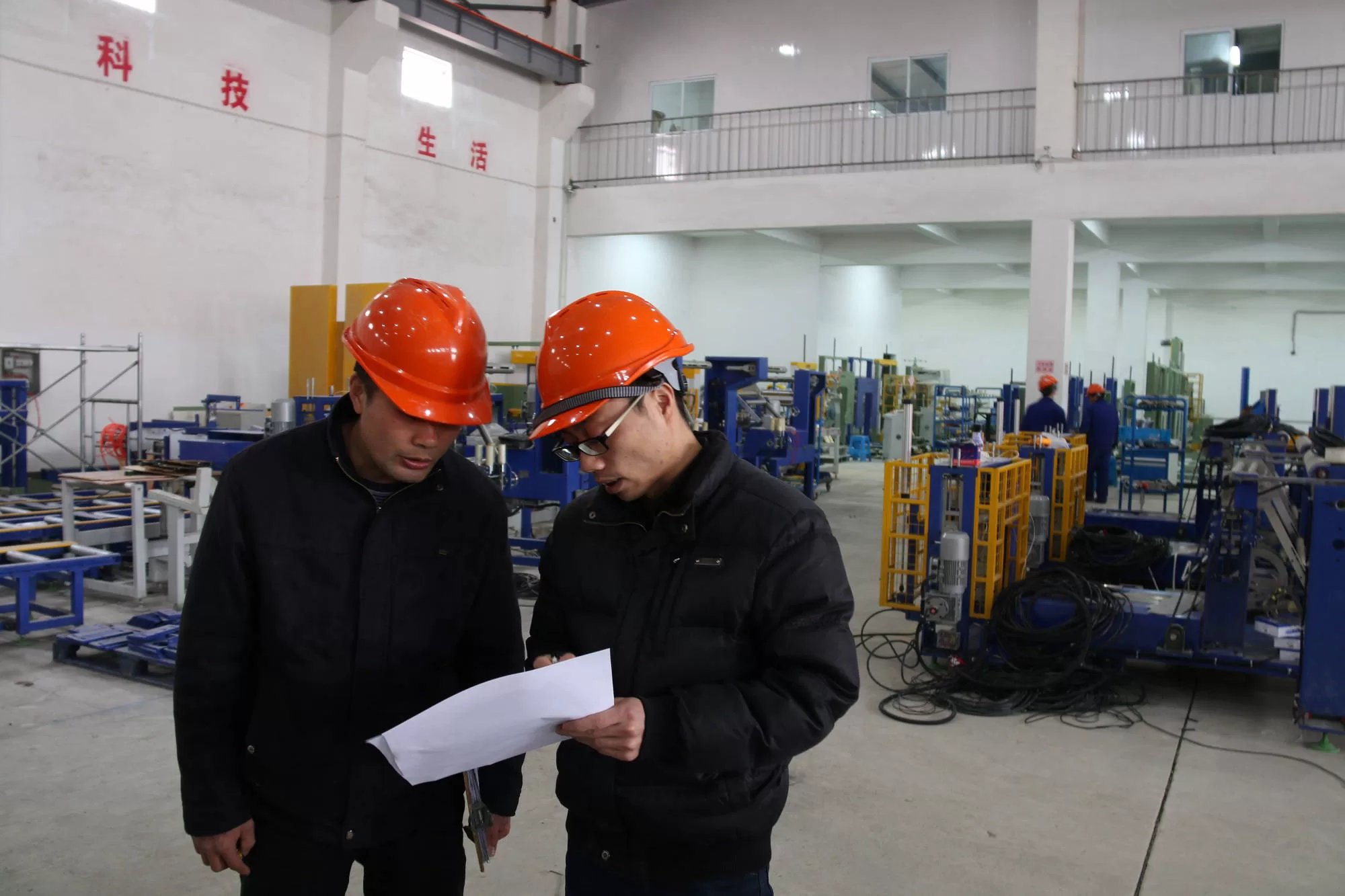Coil Upender Price Ranges: What Affects the Cost?

In industries handling large, heavy coils—such as steel processing, automotive manufacturing, and logistics—a coil upender (also known as a coil tilter) is indispensable. This specialized material handling equipment safely and efficiently rotates coils between horizontal and vertical orientations. For businesses considering this investment, a primary question is: What determines the coil upender price?
The cost of a coil upender isn't fixed; it varies significantly based on numerous factors. This article delves into the elements influencing the price, explores typical cost ranges, and helps you understand how investing in the right equipment provides long-term operational benefits, aligning with safety and efficiency goals.
1. Understanding the Basics: What is a Coil Upender?
A coil upender is a machine designed specifically to tilt or rotate heavy cylindrical objects, most commonly metal coils (steel, aluminum), from their eye-to-sky (vertical) position to eye-to-horizon (horizontal), or vice versa. This controlled movement is crucial because manually handling coils weighing several tons is impractical and hazardous. By mechanizing this process, facilities enhance worker safety, minimize potential damage to valuable coil material, reduce labor requirements, and streamline production or logistics workflows.
These machines typically utilize hydraulic or electro-mechanical systems to achieve smooth and stable rotation. Understanding their core function and variations is key to grasping the factors that drive coil upender prices.
2. Key Factors Influencing Coil Upender Price
Several variables significantly impact the final cost of a coil upender. Understanding these will help you specify the right machine for your needs and budget.
a. Load Capacity and Coil Dimensions
The most significant cost driver is the machine's load capacity—the maximum weight of the coil it can safely handle. Capacities range widely, from light-duty models handling 1-5 tons to heavy-duty units capable of rotating coils weighing 50 tons or more. Naturally, higher capacity requires a more robust structure, larger power units (hydraulic or electric), and heavier-duty components, all increasing the price.
Beyond weight, the physical dimensions of the coils (diameter, width) also affect the upender's design and cost. Larger or wider coils necessitate larger platforms and potentially more complex clamping or support mechanisms.
b. Level of Automation
Coil upenders range from basic manual or semi-automatic systems to fully integrated, automated solutions.
- Manual/Semi-Automatic: These often require operator intervention for loading, unloading, and initiating the tilting cycle via push-button controls. They are the most cost-effective option but involve more labor and potentially slower cycle times.
- Fully Automatic: These systems integrate seamlessly into automated production lines, often featuring powered conveyors, sensors for coil detection, automated loading/unloading sequences, and PLC controls that communicate with other plant systems. While significantly more expensive upfront, they offer maximum efficiency, minimal labor, and enhanced safety, especially in high-throughput environments.
c. Drive System: Hydraulic vs. Mechanical
Coil upenders primarily use either hydraulic or electro-mechanical drive systems for tilting.
- Hydraulic Upenders: Often preferred for heavy-duty applications due to their high power density and smooth, controlled motion. They typically involve hydraulic power units, cylinders, and associated valving. Maintenance involves managing hydraulic fluid and components.
- Mechanical Upenders: Utilize electric motors, gearboxes, chains, or screw mechanisms. They can offer precise control and eliminate hydraulic fluid concerns but may have limitations in very high-capacity applications or require different maintenance procedures.
The choice of drive system impacts cost, performance characteristics, and maintenance requirements.
d. Construction Materials and Build Quality
The materials used and the overall build quality directly influence durability, lifespan, and price. Heavy-duty upenders designed for continuous operation in demanding industrial environments are constructed from high-strength structural steel. The quality of welds, precision of moving parts, and protective finishes (e.g., industrial paint, powder coating) contribute to both longevity and cost. Investing in superior build quality typically translates to lower maintenance costs and less downtime over the machine's life.
e. Customization and Special Features
Standard "off-the-shelf" upenders meet many needs, but specific applications often require customization, adding to the cost. Common customizations include:
- Custom Platform Sizes/Shapes: To accommodate non-standard coil dimensions or other types of loads.
- Surface Materials: Non-marring surfaces (e.g., UHMW liners, rubber padding) to protect delicate coil surfaces.
- Conveyor Integration: Powered roller or chain conveyors on the loading/unloading platforms.
- Variable Speed Control: Adjustable tilting speed for handling sensitive materials.
- Enhanced Safety Features: Light curtains, safety fencing, emergency stops, load sensors, interlocking gates.
- Special Controls: Remote controls, touchscreen HMIs, integration with plant control systems.
Each customization requires additional engineering, materials, and labor, increasing the final price but potentially offering significant operational or safety advantages.
f. Manufacturer Reputation and Support
Established manufacturers with a strong reputation for reliability, quality, and customer service often command higher prices. This premium typically reflects proven designs, robust engineering, quality components, and the availability of comprehensive after-sales support, including warranties, spare parts, and technical assistance. While lesser-known brands might offer lower initial costs, potential risks include lower build quality, reliability issues, and limited support, which could lead to higher long-term costs.
g. Shipping, Installation, and Training
The final landed cost includes more than just the machine price. Consider:
- Shipping Costs: Transporting large, heavy equipment can be substantial, especially over long distances or internationally (including freight, insurance, duties, and taxes).
- Installation: Does the price include installation by the manufacturer or a certified technician? Complex installations or those requiring pit mounting add cost.
- Training: Operator and maintenance training costs should be factored in to ensure safe and efficient use.

3. Coil Upender in Action: Visualizing the Process
Seeing a coil upender operate provides a clearer understanding of its function and value in a material handling workflow. The video below demonstrates a typical tilting cycle.
4. Typical Coil Upender Price Ranges
Based on the factors discussed, coil upender prices can vary significantly. Here are general estimates (Note: These are indicative ranges and actual quotes will vary based on specifications, manufacturer, and market conditions):
- Entry-Level / Light-Duty Models: Basic functionality, lower capacity (e.g., 1-5 tons), often manual or semi-automatic. Price Range: **$10,000 - $30,000**.
- Mid-Range / Standard-Duty Models: Moderate capacity (e.g., 5-20 tons), semi-automatic operation, perhaps some standard safety features. Price Range: **$30,000 - $80,000**.
- High-Capacity / Heavy-Duty / Fully-Automatic Models: High capacity (20+ tons), fully automated, integrated conveyors, advanced safety features, potential customizations. Price Range: **$80,000 - $200,000+**. Highly customized or extremely high-capacity units can exceed this range.
Always obtain detailed quotes from reputable manufacturers based on your specific requirements for accurate pricing.
5. Evaluating Long-Term Value and ROI
While the initial purchase price is a major consideration, evaluating the long-term value and potential Return on Investment (ROI) is crucial. A higher-priced, well-built, appropriately automated coil upender can deliver significant benefits that justify the cost:
- Enhanced Safety: Dramatically reduces risks associated with manually handling or improperly lifting heavy coils, potentially lowering insurance premiums and preventing costly accidents. Adherence to safety standards (e.g., OSHA guidelines) is facilitated.
- Reduced Product Damage: Gentle, controlled rotation minimizes damage (dents, scratches) to valuable coil edges and surfaces compared to cruder handling methods.
- Increased Efficiency: Faster cycle times and integration with production flow improve overall throughput. Automation reduces labor dependency for the tilting task.
- Lower Labor Costs: Reduces the manpower needed for coil repositioning, freeing up personnel for other tasks.
- Durability and Reliability: Higher quality machines typically have longer service lives and experience less downtime, reducing maintenance and repair costs over time.
Conversely, opting for the cheapest option might lead to higher long-term costs due to frequent breakdowns, safety incidents, product damage, or the need for premature replacement.
6. Balancing Your Budget and Requirements
Selecting the right coil upender involves balancing your operational needs with your budget constraints. Follow these steps:
- Define Your Needs Clearly: Document the maximum weight, dimensions (min/max diameter and width), and type of coils you handle. Quantify your required throughput (coils per hour/day).
- Assess Required Automation Level: Based on throughput, existing workflows, and labor availability, determine if manual, semi-automatic, or fully automatic operation is necessary.
- Consider Future Growth: Will your coil sizes or handling volume increase? Investing in a machine with slightly higher capacity or automation potential now might be more cost-effective than upgrading later.
- Identify Essential Features: Determine necessary safety features, control types, and any required customizations (e.g., special surfaces, conveyor integration).
- Research Manufacturers: Identify reputable suppliers known for quality and support in your industry. Check reviews, ask for references, or inquire about installations at similar facilities.
- Request Detailed Quotes: Obtain quotes from multiple manufacturers based on your detailed specifications. Compare not just the price but also included features, warranty terms, lead times, and support options.
- Factor in Total Cost of Ownership: Consider shipping, installation, training, ongoing maintenance, and potential downtime costs alongside the initial purchase price.
7. What to Expect from a Reliable Manufacturer
Partnering with a trustworthy coil upender manufacturer is key to a successful investment. A reputable supplier should provide:
- Detailed Proposals: Clear quotes outlining machine specifications, included features, optional extras, pricing, and commercial terms.
- Engineering Expertise: Ability to understand your application and recommend or design the most suitable equipment, including necessary customizations.
- Quality Construction: Evidence of robust design, quality materials, and adherence to industry manufacturing standards.
- Comprehensive Documentation: Including operational manuals, maintenance guides, electrical/hydraulic schematics, and parts lists.
- Warranty Coverage: Clear terms outlining warranty duration and what components/labor are covered.
- After-Sales Support: Availability of technical support, field service, and readily accessible spare parts.
- Proven Track Record: References, case studies, or testimonials demonstrating successful installations and customer satisfaction.

8. Conclusion: Making an Informed Coil Upender Investment
The price of a coil upender is a complex equation influenced by capacity, automation, build quality, customization, and manufacturer choice. While entry-level machines offer basic functionality at a lower cost, investing in a more robust, automated, or customized unit often yields substantial long-term returns through improved safety, efficiency, reduced product damage, and lower operational costs.
By thoroughly analyzing your specific coil handling requirements, understanding the key cost factors, carefully evaluating manufacturers, and considering the total cost of ownership, you can select a coil upender that meets your operational needs and budget, providing reliable service and value for years to come.

Get Your Best Solution !
<div style="height":"40px" aria-hidden="true" class="wp-block-spacer">